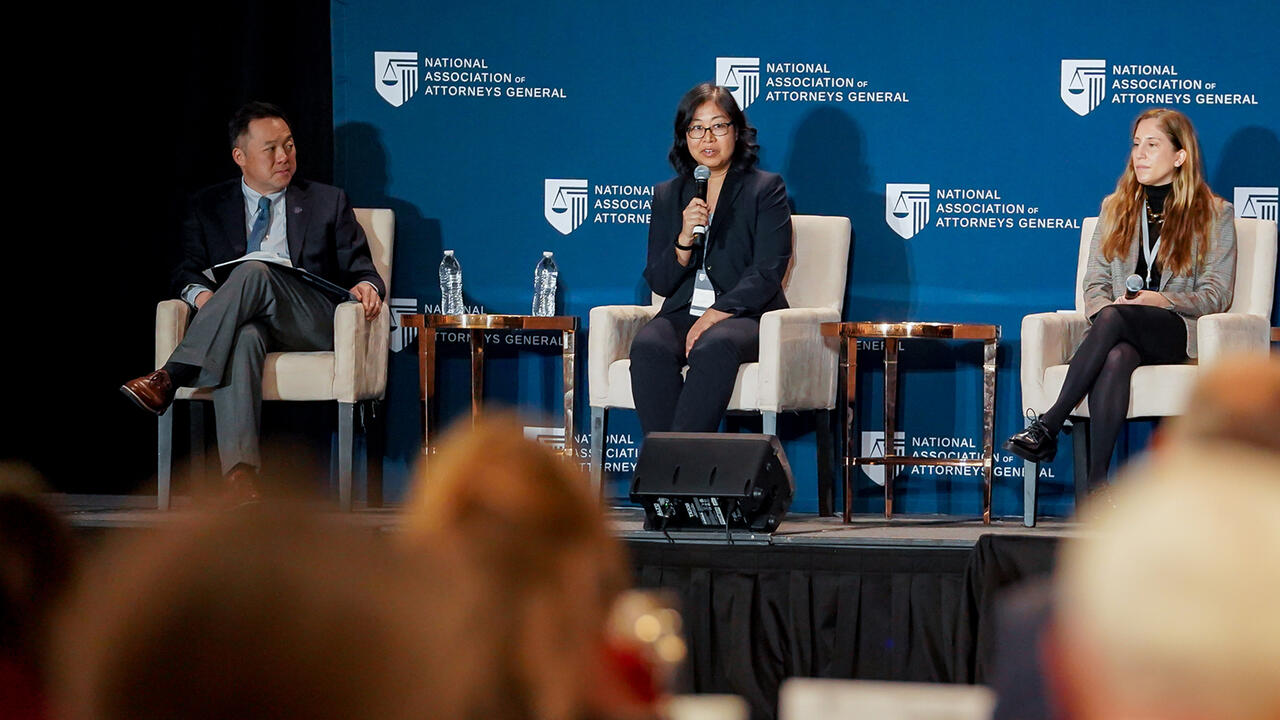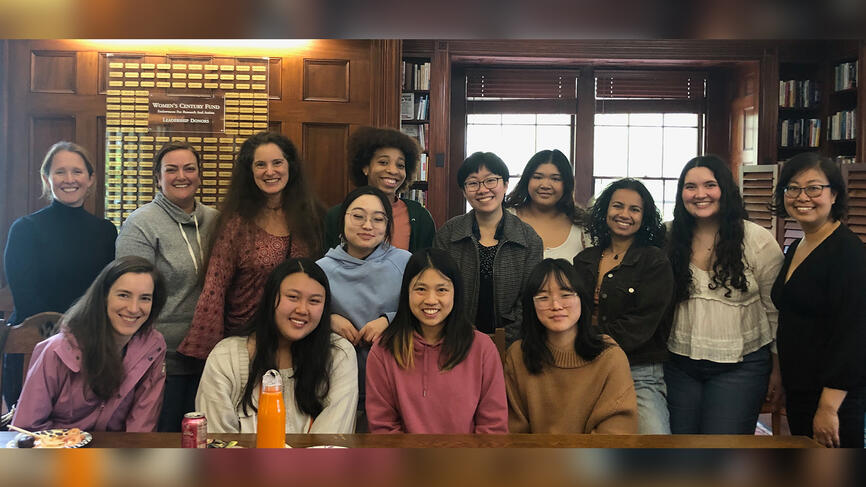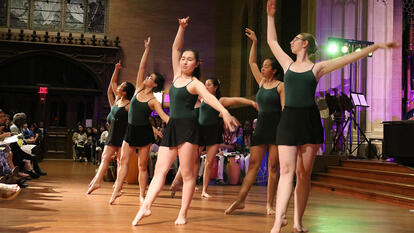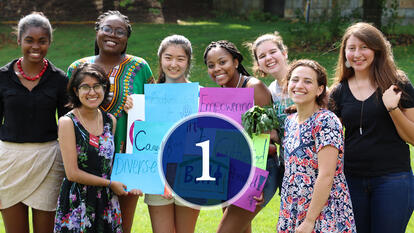
How Linda Charmaraman and the Youth, Media & Wellbeing Lab Are Influencing the Way We Think about Social Media
Linda Charmaraman has been studying the impact of social media on adolescents for nearly as long as it has been available to them. A senior research scientist at the Wellesley Centers for Women (WCW) and director of its Youth, Media & Wellbeing Research Lab (YMW lab), her research on the urgent need to understand how social media affects its youngest and most marginalized users has been getting national attention.
Over the last two years, the New York Times, the Washington Post, NPR, and Good Morning America have interviewed and quoted her. This May, U.S. Surgeon General Vivek Murthy mentioned her work in his advisory regarding social media’s effects on mental health, citing her recent book chapter on the unique ways marginalized and underserved adolescents use social media. Meta, Facebook’s parent company, started following the YMW lab’s Instagram page after interns from the WCW Class of ’67 internship program helped revitalize how to share research findings via social media outlets by using colorful graphics, upbeat designs, and intriguing quotes. Eventually a Meta representative reached out to ask Charmaraman to teach content creators how to make their content safer and focus on the well-being of young users.
Today, we recognize the need to understand social media’s impact on the lives of young people—all people, really—but that hasn’t always been the case.
Charmaraman’s early research focused on television, magazines, and video production with an eye on their effects on adolescents. “And then social media came along, and I was like, ‘This is something we need to study,’” she says. But some of her mentors viewed it as a passing fad. “Don’t go down that path,” they told her. “It’s not going to go anywhere.” Funders also shared those sentiments, figuring young people’s use of social media was not worth a central focus for scientific study. Sixteen years later, the issue is regularly in the headlines and causes much hand-wringing by parents, politicians, and others.
Charmaraman takes a pragmatic approach in her research. “Social media isn’t necessarily a good or bad thing,” she says. “It matters how you’re on-boarded into it and how you use it.” Can you recognize when you’re spending too much time on an app, or when it’s making you feel bad about yourself? Are you sidelining other activities to stay online? People of all ages can struggle with this type of self-awareness, but much of the public’s concern—and Charmaraman’s research—focuses on how adolescents navigate these questions.

In his advisory, Murthy writes that the most common question parents ask him is, “Is social media safe for my kids?” The answer, he says, is that “we don’t have enough evidence to say it’s safe, and in fact, there is growing evidence that social media use is associated with harm to young people’s mental health.” Charmaraman agrees, but she adds that media outlets often focus only on the harms and not enough on the fact that most teens have more positive than negative experiences on social media, according to the Pew Research Center. The notion that social media is good or bad for everybody is “silly to say, in a sense, although that’s what everybody believes,” she says. “It’s not an all-or-nothing thing. It really depends on how you use it, and your motivation.”
Charmaraman has approximately 1,500 adolescent participants in her ongoing longitudinal research, and she is proud that the group is more racially and ethnically diverse than the United States. “I over-recruit for racial diversity, socioeconomic diversity, and language diversity,” she says, “so I feel like my data represents a good section that’s overlooked in a lot of research of this nature.”
She has found that for members of many marginalized populations, social media connections can provide a lifeline. For LGBTQ users in particular, they may be their only source of support, Charmaraman says, and some describe their online friends as being more supportive than their real-life friends. Those connections also offer an outlet for people whose families might be “really strict and really conservative in some way, and won’t let them explore their identities and have a sense of belonging, which can be detrimental to their mental health,” she says.
Charmaraman is an advocate of additional funding for continued research and federal-level guidance to help parents and children navigate the opportunities and pitfalls of social media. (Recently, the American Psychological Association invited her to Washington as part of a group encouraging politicians to support the Kids Online Safety Act and increased NIH funding for youth mental health research.) She says it’s not helpful when states issue their own, often draconian, directives against social media, like banning apps outright or restricting users under the age of 18: “If all these states have different ways of [managing social media], it will be very hard to enforce. If you are visiting family in another state, are you going to be able to access TikTok? And who’s going to be punished? Is it the parent? The kid? Is it the advertiser who is trying to gain information from these posts?”
Charmaraman’s dreams for the future include a federal digital literacy program for teachers that would be supported “through capacity-building funding and initiatives that would increase the awareness of the importance of these issues for developing the 21st-century digital citizen.” She wants educators to feel supported in tackling the issue in schools and parents to have the resources to normalize conversations about using social media—viewing it as part of the adolescent experience, like learning to drive. And she hopes students in Wellesley’s education program can graduate with training and possibly a certificate in digital well-being that she and Noah Rubin, director of the elementary education program, are developing. They envision graduates of the program offering their expertise in the schools where they teach, and Wellesley becoming known as an institution that requires this skill of their education students, she says.
In the meantime, Charmaraman continues to teach EDUC 328: Social Technologies and Adolescent Development (a Calderwood Seminar in Public Writing), recruit young people into her study, and work with Wellesley students and others in the YMW lab. She notes that eight of her last 10 peer-reviewed publications were co-authored with students. She also plans to continue consulting for social media policymakers, tech designers, and content creators. “It’s a really innovative way to finally have our research expertise being used by a social media platform company,” she says. “That’s one of the reasons why I did the research—to bridge research, practice, and policy and make a meaningful difference out there.”



